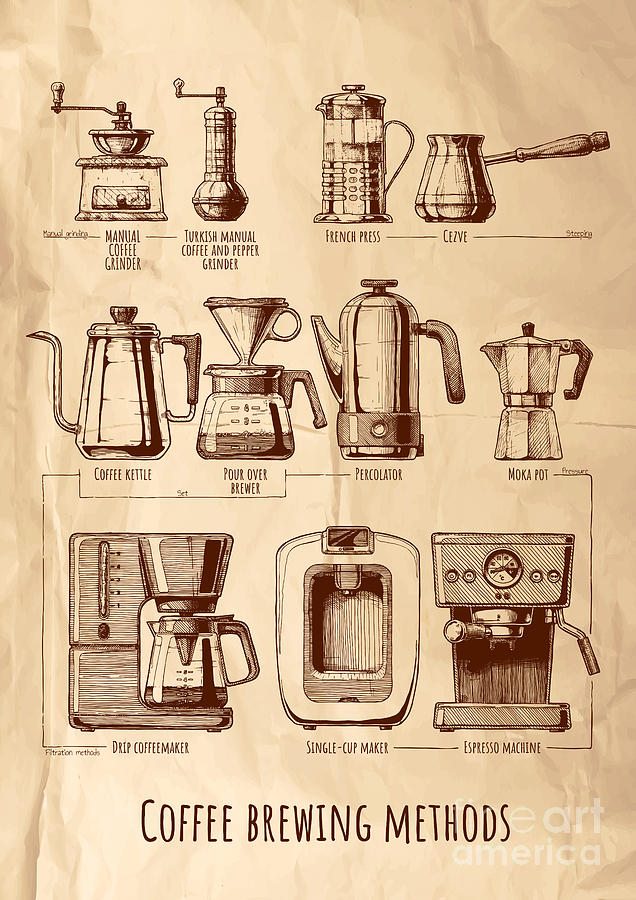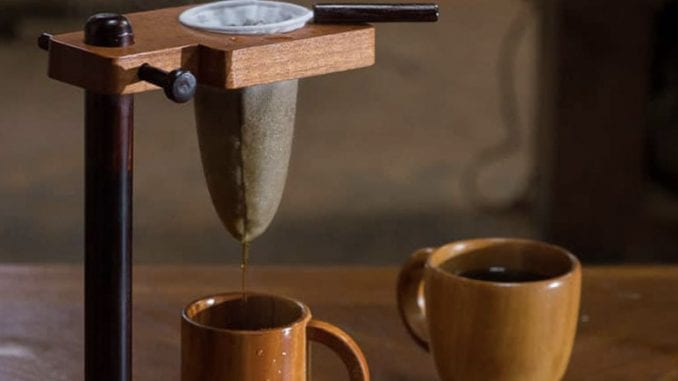Finding the Art of Coffee Brewing Methods: Tips for each Fanatic
Finding the Art of Coffee Brewing Methods: Tips for each Fanatic
Blog Article
The Science Behind Coffee Developing: Just How Temperature Level and Time Affect Your Drink
Comprehending the science behind coffee developing reveals that temperature and time are not plain variables however pivotal components that dictate the beverage's taste profile and overall top quality. The optimal brewing temperature generally falls in between 195 ° F and 205 ° F, while the duration of extraction differs dramatically across various methods. This interaction of variables can lead to a mug that is either disappointing or fascinating. As we discover the nuances of these aspects, the concern arises: how can one successfully balance temperature and time to achieve that best brew?
The Chemistry of Coffee Extraction
The chemistry of coffee removal dives into the elaborate procedures that transform raw coffee beans right into the aromatic drink appreciated worldwide. This transformation primarily includes the solubility of different substances existing in the beans, which are affected by variables such as work size, water top quality, and the brewing technique employed.
During the brewing procedure, warm water acts as a solvent, removing soluble substances, including high levels of caffeine, acids, lipids, and sugars, from the coffee premises. Each substance adds to the flavor profile, fragrance, and body of the final drink. Acids are liable for tasty and intense notes, while oils add to a rich mouthfeel.
The initial stages of developing remove acids and sugars, leading to a positive acidity, while extended removal can lead to resentment due to over-extraction of undesirable compounds. Comprehending these chemical interactions is important for enhancing brewing techniques, as the balance in between removal time and water temperature can considerably influence the overall top quality of the coffee.
Perfect Developing Temperatures
Discovering the best brewing temperature level is crucial for opening the complete capacity of coffee flavors and aromas - coffee brewing methods. Research study indicates that the optimal range for developing coffee lies between 195 ° F to 205 ° F(90 ° C to 96 ° C) Within this range, the extraction procedure effectively dissolves the desirable soluble compounds in coffee beans, leading to a balanced and tasty mug
Brewing at lower temperatures, such as listed below 195 ° F(90 ° C ), might cause under-extraction, producing an acidic and weak mixture with muted tastes. Conversely, developing at temperature levels exceeding 205 ° F(96 ° C) can lead to over-extraction, generating a bitter and rough taste as a result of the excessive dissolution of unwanted compounds, such as tannins.
In addition, the ideal developing temperature level can vary depending on the coffee bean kind and roast level. For circumstances, lighter roasts frequently gain from somewhat higher temperatures to enhance their complicated flavor profiles, while darker roasts may be much better matched to reduced temperatures to mitigate anger.
Ultimately, keeping accuracy in brewing temperatures is critical for achieving a harmonious equilibrium of flavors, making sure that every cup of coffee provides a satisfying sensory experience.
Influence of Developing Time
Brewing time plays a critical role in identifying the flavor profile and overall quality of coffee. The removal procedure, which affects the preference, fragrance, and body of the drink, is greatly depending on the length of time the coffee grounds are in contact with water. Shorter brewing times can result in under-extraction, leading to a sour or weak flavor, as inadequate soluble compounds are liquified. Alternatively, long term developing can cause over-extraction, where unfavorable compounds are launched, leading to a bitter or astringent preference.
Ideal brewing time varies relying on the approach utilized and the grind size of the coffee. A French press normally needs about four minutes, while espresso extraction is usually finished within 25 to 30 seconds. It is necessary to adjust brewing time in combination with various other variables, such as water temperature and coffee-to-water ratio, to attain the desired taste profile.
Recognizing the impact of developing time enables coffee fanatics to refine their developing techniques, eventually boosting the sensory experience of their cup (coffee brewing methods). With mindful attention to this variable, one can open the complete capacity of the coffee, disclosing its distinct features and nuances
Brewing Approaches and Their Effects

For instance, techniques like French press and cool brew permit for a longer steeping time, resulting in a fuller body and durable flavor because of boosted removal of oils and soluble solids. On the other hand, espresso developing uses high stress and a much shorter removal time, creating a concentrated shot that highlights intense tastes and a rich crema.
Pour-over methods, such as Chemex or V60, supply an even more regulated extraction process, enabling the brewer to control flow rate and water circulation, which can boost brightness and clarity. Percolation techniques cycle water via the coffee grounds numerous times, leading to a more powerful, frequently bitter flavor.
Lastly, making use of paper filters versus metal filters can also influence the final preference; paper filters usually produce a cleaner cup by trapping oils and great bits, while metal filters permit more oils to travel through, adding to a fuller mouthfeel - coffee brewing methods. Recognizing these nuances can elevate the coffee experience considerably
Tips for Refining Your Mixture
A well-executed brew can transform also the most basic coffee right into a remarkable experience. Grind the beans simply before making to take full advantage of freshness, my website guaranteeing the grind size matches your developing approach-- coarser for French press and finer for coffee.
Water top quality plays a vital function; use filtered water devoid of contaminations. The perfect developing temperature varies in between 195 ° F and 205 ° F(90 ° C to 96 ° C ) Also hot can blister the coffee, while too awesome might under-extract flavors.
Timing is equally crucial. For immersion approaches, steeping for 3 to five minutes is optimal, whereas drip techniques usually take around 5 minutes. Try out mixture times to find your favored strength.

Verdict
In summary, the intricate relationship between temperature level and time is paramount in the coffee brewing procedure. Sticking to optimum developing temperature levels between 195 ° F and 205 ° F, alongside exact timing tailored to every method, ensures the wanted taste profile is accomplished. Comprehending these scientific concepts equips individuals to fine-tune their developing techniques, eventually leading to an extra balanced and enjoyable coffee experience. Mastery of these factors is necessary for any coffee enthusiast looking for excellence in their beverage.
Understanding the scientific research behind coffee developing discloses that temperature and time are not plain variables however crucial aspects that determine the drink's taste account and total quality. Comprehending these chemical communications is vital for maximizing brewing methods, as the equilibrium in between removal time click now and water temperature level can significantly affect the total top quality of the coffee.Brewing time plays an essential role in establishing the taste account and general quality of coffee. By focusing on these components-- bean quality, grind size, water temperature level, steeping time, and proportion-- you can boost your coffee developing procedure, resulting in a consistently remarkable cup.
In summary, the intricate connection between temperature level and time is paramount in the coffee brewing procedure.
Report this page